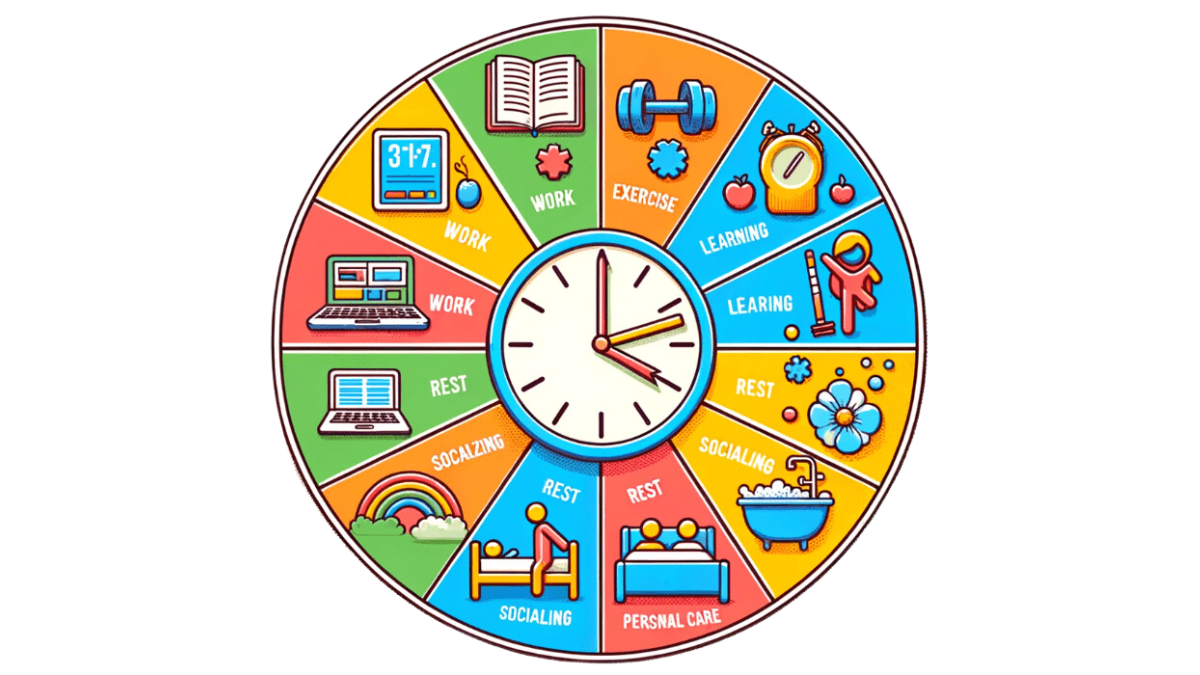Table of Contents
Introduction Of Time Management Chart
Ever feel like time slips through your fingers like sand? Enter the hero of the hour – the Time Management Chart! It’s not complicated wizardry; consider it your trusty sidekick in the quest to conquer the clock. Imagine a world where you’re the captain of your schedule, sailing smoothly through tasks without the storm of chaos. The Time Management Chart is your treasure map of that world. There is no need for intricate time theories – we’re talking about a simple, visual guide to reclaiming control over your day.
Definition of Time Management Chart
A time management chart is a visual tool designed to organize and schedule our time, based on priority and deadlines. It helps us to visualize how our time is allocated, making it easier to adjust and optimize our schedules.
Importance of Time Management
Effective time management allows us to accomplish more in a shorter period of time, which leads to more free time, lowers stress, and leads to career success. It’s about making sure we’re working on the right things at the right time.
Overview of Time Management Tools
Besides time management charts, tools such as to-do lists, productivity apps, and time tracking software can also help us manage our time better.
Understanding Time Management Charts
What is a Time Management Chart?
A time management chart is essentially a timetable that helps us track what we need to do and when. It gives us a clear overview of our upcoming tasks and helps us plan our time accordingly.
Types of Time Management Charts
These charts come in various forms, with the most common ones being:
Gantt Charts
Gantt charts are bar charts that represent the start and finish dates of different tasks within a project.
Eisenhower Matrix
The Eisenhower Matrix helps us decide on and prioritize tasks by their urgency and importance.
Kanban Boards
Kanban boards help visualize work at various stages of a process using cards to represent tasks and columns to represent each stage.
Calendar-based Charts
Calendar-based charts are the simplest form of time management charts and are used for scheduling and organizing tasks.
How Time Management Charts Work
Time management charts work by providing a visual overview of our tasks and commitments. They help us understand how our time is distributed and where adjustments need to be made.
Benefits of Using Time Management Charts
By using time management charts, we can prioritize our tasks, set deadlines, track our progress, and ultimately, increase our productivity.
Creating a Time Management Chart
Setting Clear Goals and Priorities
The first step in creating a time management chart is to clearly identify our goals and set our priorities.
Breaking Down Tasks
Next, we need to break down our tasks into manageable chunks. This makes it easier to tackle larger tasks and helps prevent procrastination.
Allocating Time Blocks
Once our tasks are broken down, we allocate specific time blocks to each task on our chart.
Choosing the Right Chart for Your Needs
Finally, we choose the type of time management chart that best suits our needs, considering the nature of our tasks and our personal work style. Whether it’s a simple calendar-based chart or a more complex Gantt chart, the right tool can make all the difference in our productivity.
Watch this video to Create your time management chart
Video: https://youtu.be/Hsijk3l5vjQ?si=C0wNHRmxKLwJtSBA
Popular Time Management Techniques
Pomodoro Technique
The Pomodoro Technique is a time management method developed by Francesco Cirillo. It uses a timer to break work into intervals, traditionally 25 minutes in length, separated by short breaks.
Time Blocking
Time Blocking is a time management method where you divide your day into blocks of time. Each block is dedicated to accomplishing a specific task, or group of tasks, and only those specific tasks.
Eat That Frog!
“Eat That Frog!” is a method by Brian Tracy which encourages users to tackle the most challenging task—the one you are most likely to procrastinate on, but also probably the one that can have the greatest impact on your life.
The 2-Minute Rule
The 2-Minute Rule was developed by David Allen in his bestselling book, Getting Things Done. The idea is to immediately complete tasks that take two minutes or less, rather than putting them off.
Tips for Effective Time Management
Avoiding Multitasking
While multitasking may seem efficient, it often leads to lower productivity due to divided attention. By focusing on one task at a time, we can complete it faster and with fewer errors.
Eliminating Time Wasters
Identifying and eliminating time wasters is crucial. This could mean reducing unnecessary meetings, limiting time spent on social media, or avoiding perfectionism.
Regular Review and Adjustment
Regularly reviewing and adjusting our plans allows us to stay flexible and adapt to changing circumstances.
Incorporating Breaks
Including regular breaks in our schedule helps maintain a high level of focus and prevents burnout.
Real-world Applications
Time Management in the Workplace
In the workplace, effective time management can lead to increased productivity, reduced stress, and better job satisfaction.
Time Management for Students
For students, good time management skills can help balance the many demands of school, work, and personal life.
Time Management for Entrepreneurs
Entrepreneurs are often juggling many tasks at once. Effective time management allows them to stay focused and organized.
Time Management in Daily Life
In our daily lives, good time management can help us find more time for the things we love, reduce stress, and achieve a better work-life balance.
Challenges and Solutions
Common Challenges in Time Management
Some common challenges in time management include procrastination, lack of planning, and distractions.
Strategies to Overcome Time Management Challenges
Strategies to overcome these challenges include setting clear goals, prioritizing tasks, and using time management tools.
Conclusion
Recap of Key Points
Time management charts and techniques can significantly improve our productivity, reduce stress, and create balance in our lives.
Encouragement for Implementing Time Management Charts
We encourage everyone to explore and implement these time management charts and techniques to reap their benefits. Remember, the first step is always the hardest, but the rewards are worth the effort.
Frequently Asked Questions
1. What is the best time management chart to use?
The best time management chart to use depends on your circumstances and work style. A Gantt chart might be most suitable if you have a project with many interrelated tasks. If you struggle with prioritizing tasks, an Eisenhower Matrix could be helpful. Ultimately, the best chart is one that you find easy to use and helps you manage your time more effectively.
2. Can I use more than one time management technique?
Absolutely. Different techniques may be suitable for different tasks or at other times. For example, you might use the Pomodoro Technique for focused work sessions and Time Blocking for planning your day. The key is finding a combination of best techniques for you.
3. How can I identify my central time wasters?
Identifying time wasters often involves some reflection. Consider tracking your activities for a few days to get a clear picture of where your time goes. You might be surprised at how much time is taken up by activities like checking email, browsing social media, or attending unnecessary meetings. Then, try to develop strategies to reduce these time wasters.








![Newzvilla Maruti eVX Electric SUV to Feature Dual Screens and Rotary Dial [Video].](https://newzvilla.co.in/wp-content/uploads/2024/04/Screenshot-2024-04-04-212840-551x431.png)




Leave feedback about this